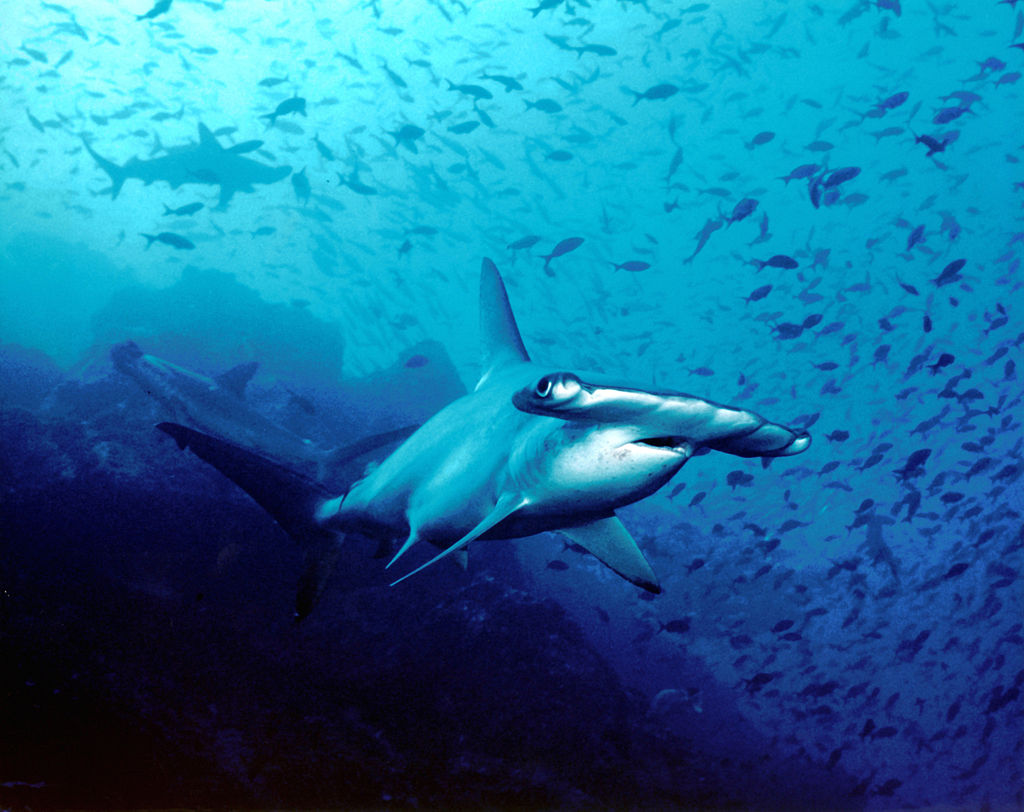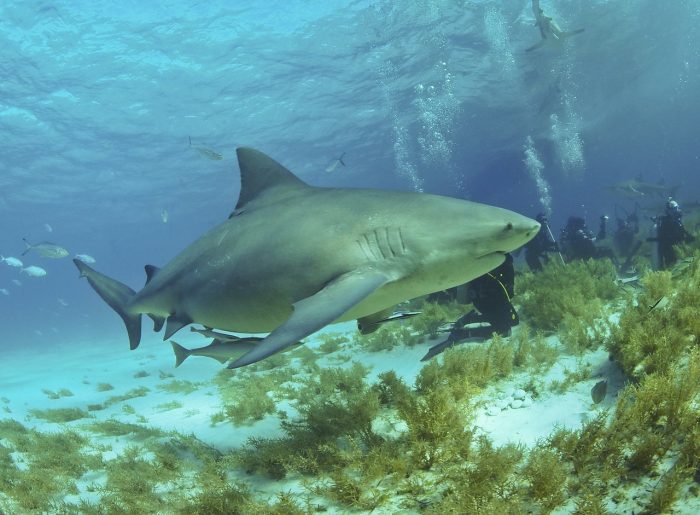
Sharks give birth to live young, which is a characteristic of mammals. Does this mean that sharks are mammals? No, sharks are not mammals. Even though sharks give birth to live young, they are classified as mammals.
Why is this the case? What distinguishes mammals from other kinds of animals, and why do sharks not fall into the mammal category? To understand the answers to these questions, we’ll have to take a deep dive into both the anatomy of sharks and the criteria used to classify mammals.
What Is A Mammal?
Let’s start by defining the term mammal. Mammals are a class of organism that have specific characteristics that separate them from other types of organisms. One of the primary characteristics that define mammals is the fact that they feed their young by producing milk. The term mammal is derived from the term used to describe part of a female animal’s body, the part that creates milk to feed young – the mammary gland.
After the birth of young, mammals begin lactating or producing milk from the mammary glands. This process is regulated by hormones which are controlled by different-sex steroids. It is typically the female of the mammal species that feed the young through lactation, although some mammal species have the male lactate.

Photo: Virginia Opossum (https://commons.wikimedia.org/w/index.php?curid=1705724) By Cody Pope – Wikipedia:User:Cody.pope, CC BY-SA 2.5 (https://creativecommons.org/licenses/by-sa/2.5)
The presence of mammary glands is one of the primary ways that mammals are classified, but there are other characteristics used to distinguish mammals from other organisms. Other characteristics important to the mammalian class are:
- The presence of hair or fur on the body
- A four-chambered heart construction
- The presence of a single jaw bone
- The presence of a diaphragm
- Being an endothermic vertebrate (warm-blooded)
- Having scent, sweat, and sebaceous glands.
These characteristics are tied to the body structure of mammals. As an example, the four-chambered heart characteristic of mammals is necessary to circulate the blood and oxygen through the body, and mammals take in oxygen through lungs. Meanwhile, the diaphragm is a bit of muscular tissue that separates the lungs and heart from the stomach.
Note that these criteria are heuristics and there are sometimes exceptions to these criteria. For instance, although another notable characteristic of mammals is giving birth to live young, not all mammals give birth to live young. Consider that the platypus lays eggs when giving birth, yet it is still classified as a mammal because it feeds the infants with milk from mammary glands. Similarly, echidnas also lay eggs when giving birth instead of birthing live young.
Sweat glands also aren’t present in every mammal. Note that whales lack sweat glands, due to the fact that living in the ocean renders them somewhat useless. Whales do have a type of hair however, and the fact that whales are considered mammals could be responsible for the confusion about the classification of sharks. People may reason that since whales are large, fish-like mammals that give birth to live young, sharks (which can also be larger than most fish and birth live young) must also be mammals. Yet as previously stated, sharks are not mammals, rather they are a type of fish (albeit one that shares characteristics of both fish and mammals.)
Why Aren’t Sharks Mammals?
Now let’s take a look at the characteristics of sharks, the characteristics that disqualify sharks from being considered mammals.
To begin with, almost every mammal is endothermic, or warm-blooded. There are a few edge cases that bend this rule, such as the naked mole rat, which in general does not regulate its body heat by spending energy. Mammals, being endothermic animals, maintain a constant temperature despite fluctuations in their environment. In contrast, sharks are cold-blooded animals, whose body temperatures can vary greatly as the surrounding environmental conditions shift. For this reason, sharks must find the proper external environment to regulate their body temperature.

Photo: Zebra Shark (Stegostoma fasciatum) (https://commons.wikimedia.org/w/index.php?curid=38592558) By Julien Bidet – The uploader on Wikimedia Commons received this from the author/copyright holder., CC BY-SA 4.0 (https://creativecommons.org/licenses/by-sa/4.0)
Sharks also violate another major property of mammals, they don’t feed their young with milk produced by mammary glands. Sharks lack mammary glands entirely, and therefore it is argued that beyond the other reasons, this disqualifies sharks from being considered mammals.
Most mammals possess some sort of hair on their body, which assists in regulating temperature. There are some mammals which have little to no hair on them. Whales and dolphins, while technically having hair on their skin, have such little hair that it is barely noticeable. Sharks do not have hair on them, they have scales which assist them in swimming.
Finally, mammals take oxygen into their bodies by using lungs, while fish utilizing gills to control the oxygen levels in their bodies. Unlike mammals, sharks have gills that draw oxygen from the water around them.
What Makes Sharks Fish?
While sharks like many of the characteristics associated with mammals, they also lack some of the characteristics associated with fish as well. Many fish have swim bladders, a structure that enables them to control their position in the water. Many fish also have bones within them, but sharks lack bones. Instead, sharks have cartilage within them, and this places them within the section of cartilaginous fish. The key characteristics that sharks possess which make them fish are: being cold-blooded, having a vertebrate, having gills.
There are three different types of fish: jawless fish, bony fish, and cartilaginous fish. The jawless fish species include lampreys and hagfish, and as their name implies they lack jaws. Bony fish are the vast majority of fish, some 95% of all known fish species. Bony fish have skeletons made comprised of bones, and they typically have a swim bladder. Since sharks lack a swim bladder, they have to swim to get to different depths. Cartilaginous fish are fish which don’t have bones, instead, their body structure is maintained by cartilage, which is like bone but much more flexible.
General Facts About Sharks
There are approximately 440 known species of shark, and many are found only in relatively small portions of the world.
Sharks have many different rows of teeth, and when a shark loses a tooth it is replaced by one in another row. Sharks are constantly growing new teeth. The skin of a shark is comprised of many different scales. These scales provide the shark with defense, acting as an outer layer of armor, and they also facilitate the shark’s movement through the water by being smooth. The upper half of a shark is typically dark colored, which helps them blend in with water when viewed from above. In contrast, the underside of a shark is often lighter colored, which helps them blend in with the surface from below.
Sharks are carnivorous, but they can subsist on a wide variety of different sea creatures. Different sharks eat different things like fish, mollusk, crustaceans, and marine mammals. Some sharks even subsist on very small things like plankton and krill. Sharks are capable of detecting blood in the water from miles away.

Bull shark (https://commons.wikimedia.org/w/index.php?curid=77940397) By Albert Kok~enwiki – Own work, CC BY-SA 4.0 (https://creativecommons.org/licenses/by-sa/4.0)
Sharks can live in many different aquatic environments. Some species of sharks inhabit coral reefs, coastal regions, and other fairly shallow areas. Meanwhile, other sharks live in deep waters, the open ocean, and the ocean floor. Though most people think of sharks as sea creatures, there are some species of sharks that live in freshwater areas. One of the most famous freshwater sharks is a bull shark, which can sometimes be found in lakes like Lake Nicaragua in Central America.
Sharks tend to be the most active during the evening and at night, which is when they hunt. Some species of shark are known to migrate large distances to search for food or to reach breeding grounds. Some kinds of sharks are fairly solitary creatures, but other shark species display very social behavior. As an example of social behavior in shark, Hammerhead Sharks are known to school in the waters surrounding islands and seamounts during mating season.
Some species of shark, mainly the larger, more predatory species, often surprise prey by attacking them from below. Meanwhile, other types of sharks will look for schools of fish and attack in a feeding frenzy. Sharks that live on plankton and krill filter feed by moving through the ocean with their mouths open. Certain species of sharks have even evolved the ability to bottom-feed, though only those which live on the floor of the ocean.
Sharks take a long time to mature in comparison to many other species of fish, taking somewhere between 12 to 15 years on average to reach breeding age. Combined with the fact that many species of sharks give birth to just one or two young per breeding cycle, it can be very difficult for shark populations to recover after they have experienced a decline.









